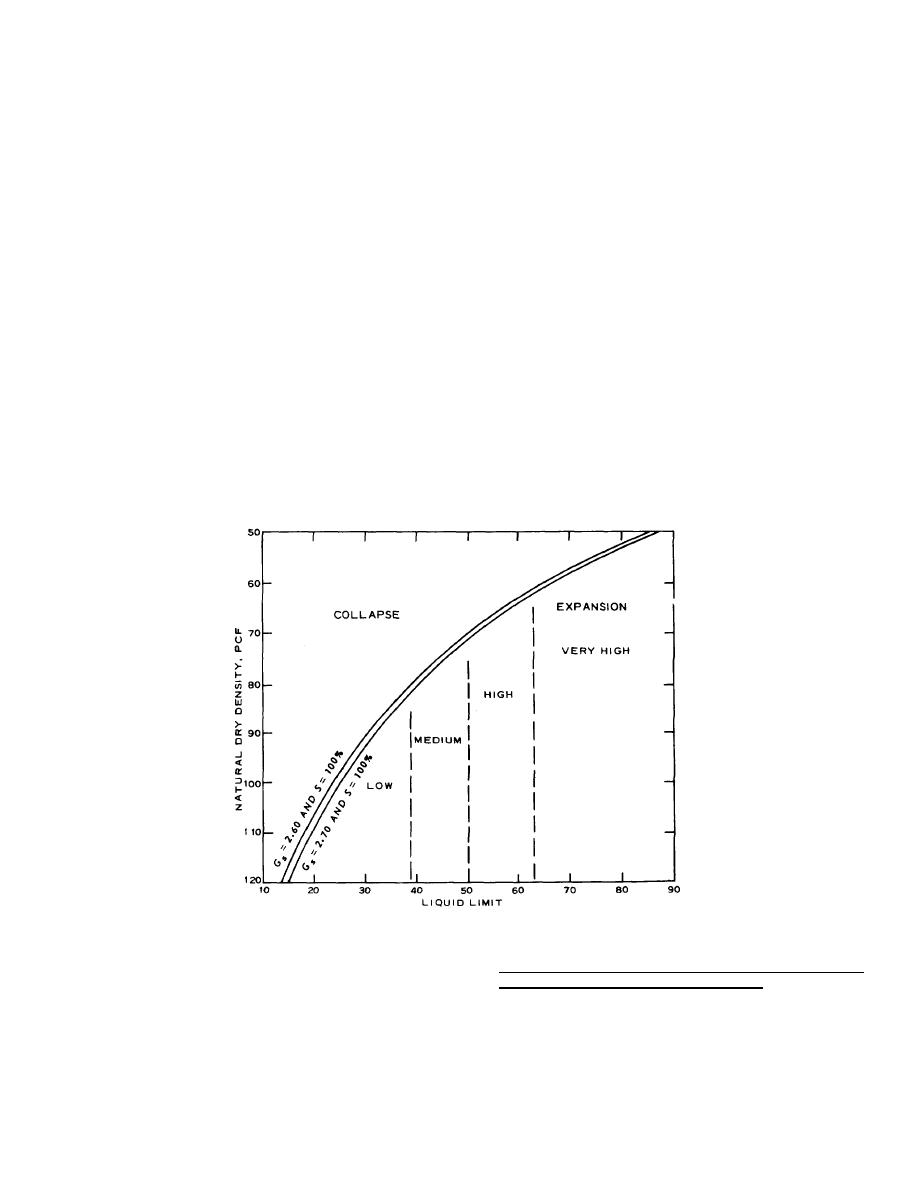
TM 5-818-1 / AFM 88-3, Chap. 7
c. Collapsible soils are unsaturated soils that
The total (undrained) shear strength parameters, c and
φ, are designated as cohesion and angle of internal
undergo large decreases in volume upon wetting with or
without additional loading. An estimate of collapsibility
friction, respectively. Undrained shear strengths apply
(decrease in volume from change in moisture available)
where there is no change in the volume of pore water
and expansion of a soil may be made from figure 3-13
(i.e., no consolidation) and are measured in the
based on in situ dry density and LL.
laboratory by shearing without permitting drainage. For
saturated soils, φ = 0, and the undrained shear strength,
3-7.
Shear strength of soils.
c, is designated as su. The effective stress parameters,
c' and φ', are used for determining the shear strength
a. Undrained and effective strengths. The
provided pore pressures, u, are known. Pore pressure
shear strength of soils is largely a function of the
changes are caused by a change in either normal or
effective normal stress on the shear plane, which equals
shear stress and may be either positive or negative.
the total normal force less the pore water pressure. The
Pore pressures are determined from piezometer
shear strength, s, can be expressed in terms of the total
observations during and after construction or, for design
normal pressure, σ, or the effective normal pressure, σ`,
purposes, estimated on the basis of experience and
by parameters determined from laboratory tests or,
behavior of samples subjected to shear tests. Effective
occasionally, estimated from correlations with index
stress parameters are computed from laboratory tests in
properties. The shear test apparatus is shown in figure
which pore pressures induced during shear are
3-14. The equations for shear strength are as follows:
measured or by applying the shearing load sufficiently
slow to result in fully drained conditions within the test
s = c + σ tan φ (total shear strength parameters)
specimen.
c' + (σ - u) tan φ' (effective shear
s' =
strength parameters)
(Courtesy of J. K. Mitchell and W. S. Gardner, "In Situ
Measurement of Volume Change Characteristics, "
Geotechnical Engineering Division Specialty Conference on
In Situ Measurement of Soil Properties, 1975. North
Carolina State University, Raleigh, N. C. Reprinted by
permission of American Society of Civil Engineers, New
York.)
Figure 3-13. Guide to collapsibility, compressibility, and expansion based on in situ dry density and liquid limit.
3-16


 Previous Page
Previous Page
